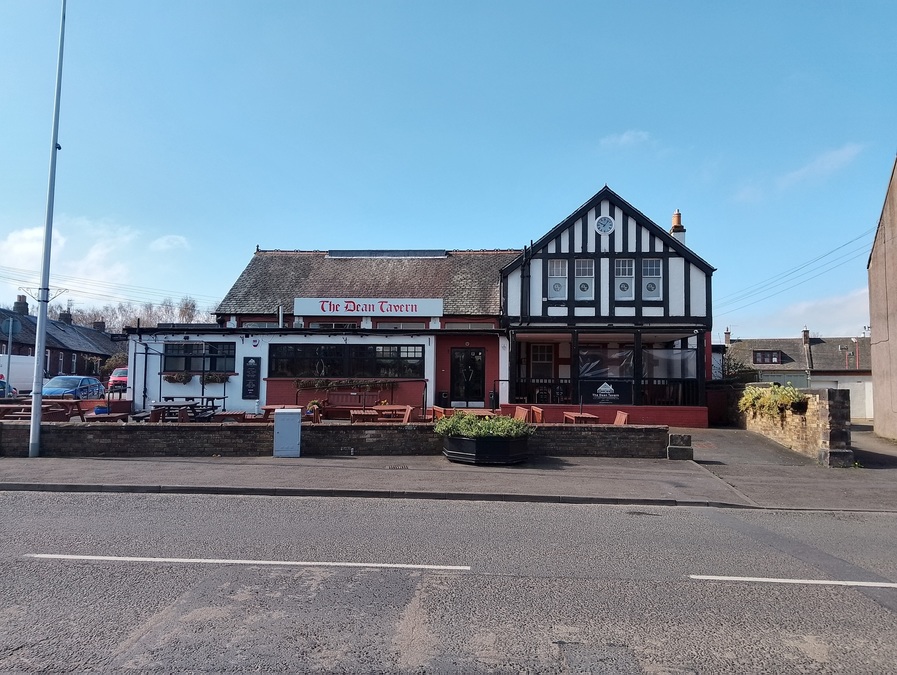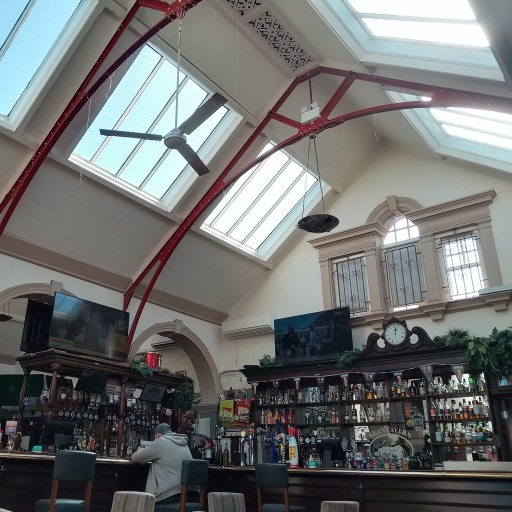In Goth We Trust: The forgotten history of Scotland's Goth Pubs
After 115 years, the Prestoungrange Gothenburg closed its doors in January. It was one of the last Goth pubs in Scotland – Ali Leetham looks at its surviving relatives, and finds a history of temperance, solidarity, community spirit, and dramatic decor
When you hear the words ‘Goth pub’, you might picture a dank bar full of moody teenagers in dark clothing, but Goths are actually named after Gothenburg in Sweden, where this particular concept originated. The idea? A pub model which encouraged moderation while helping the local community. In the late 19th and early 20th centuries, dozens of pubs opened across Scotland under the Gothenburg system, which aimed to discourage heavy drinking and promote rational pursuits. Shareholders in Goth pubs were only entitled to a 5% return; all other profit had to be used to benefit the community.
The fad for Goths in Scotland began in the 1890s. Although drinking to capacity had long been considered a national virtue, the temperance movement was booming in popularity, with many adherents supporting the Gothenburg system. Opening more pubs may seem like an unlikely solution to Scotland’s drink problem, but many in the movement only advocated moderation rather than abstinence, or at least swapping dangerous spirits for nutritious beer.
The Demon Drink
For one thing, the austere interiors of some early Goths discouraged people from staying long enough to get drunk. Craig Mair, a local historian writing a book on Goths, describes how the Gothenburg in Fallin near Stirling was originally a “drab, dour, plain sort of place” with “no tables, chairs, heating or even lighting”. This didn’t last long, however. In fact, some Goths, such as the Black Bull Inn in Dalkeith, tried the opposite tactic. The pub was instead a civilised environment, Mair explains, “the idea being to make it so swanky that men were encouraged to behave themselves.”
The outside of many Gothenburgs also had a unique character: a sort of overblown Garden-City-meets-Arts-and-Crafts aesthetic that made them stand out from the rest of the street. Mark Mulhern, a senior research fellow at the University of Edinburgh who has studied Goths, suggested their obvious design was another way to discourage drinking. “An awful lot of pubs at that time were just somebody’s front room, and people would slink into the howff,” he points out, whereas you can’t secretly slink somewhere like the Armadale Goth with its imposing clock tower over the entrance.
Goths also gave people an alternative to drinking by encouraging healthy, intellectual activities. Most Goths had a separate games room or reading room where patrons could linger without drinking. In fact, the small function room at Newtongrange's Dean Tavern is still called the Temperance Lounge. The pubs also funded sober facilities for self-improvement, such as libraries and working men’s institutes.
From Pits to Pubs
Gothenburgs were especially prevalent in east-central Scottish mining communities. In 1896, the Fife Coal Company established Scotland’s first Goth in the Hill of Beath mining village. Roughly 60 more opened across Scotland in the following couple of decades, mostly in Fife and the Lothians.
As many mining towns were built from scratch around a pit, they didn’t already have a pub, or any infrastructure. It’s easy to see why coal companies might allow or even invest in Goth pubs that would encourage moderation among workers and pay for local facilities, removing some of the financial burden from the companies.

Dean Tavern, Newtongrange. Image: Ali Leetham.
Miners themselves also established and managed Goths. Fallin’s Gothenburg was founded by a mix of miners, managers, a mine cashier and a doctor. Mair theorised the reason for this inter-class collaboration was that all of the founding committee were bowlers. This is a reasonable suggestion, given that the first thing the pub funded was a bowling green.
Many of the Goths played a vital role during miners’ strikes, providing food and donations. During the 1984-85 strike, Polmaise Colliery at Fallin earned the epithet of the most militant pit in Scotland, being the first to down tools and the last to return to work. Mair recalls that “one of the wash houses in Fallin, which had a boiler, was used to cook up food to provide for the families of the miners,” with The Gothenburg donating ingredients.
Giving Back
Each Goth would have a committee that decided how best to benefit the community with the pub’s profits. In brand new mining towns, Goths could provide basic infrastructure such as pavements and electric lighting. They also bankrolled new building projects, like a cinema in Kelty, a bathing pool near Fallin, and a new pitch and pavilion for Newtongrange Star F.C. Many of them funded a local nurse before the creation of the NHS. Fiona Holborn, secretary of The Goth in Armadale, explained that the adjoining shop used to house Nurse MacAffee, whose wages, uniform and equipment were provided by The Goth.
Donations to local clubs and causes have been a staple of Goths since the beginning. In the early 20th century, the Armadale Goth donated to the Armadale Public Band, the senior football club and local hospitals. Over in Fallin, The Gothenburg supported the Polmaise male voice choir, the quoiting club and the Boy Scout troop. Meanwhile, Dean Tavern was handing out money to the Burns Club, the flower show and the Homing Pigeon Club.

Interior view of the Dean Tavern. Image: Ali Leetham.
Goths have been supporting some of the same sports clubs and bands for decades, though newer organisations also benefit. The Prestoungrange Gothenburg forged strong links with the Prestonpans art community in the 21st century, funding multiple murals, art exhibitions, and an annual art festival. Meanwhile, the Dean Tavern supported community radio, and the Armadale Goth started hosting the Spiritualist Church and helping the food bank. And Goths have always supported children’s causes. A retired history teacher, Mair taught the Fallin kids. “The Goth was part of their lives,” he says. “It paid for the gala day. It paid for all kinds of things that the kids enjoyed, the youth club and so on.”
Gala days are a big celebration in mining towns. A gala queen is crowned, houses decorated, and the whole community gets together to watch the procession. In the warren-like basement of the Armadale Goth, I saw the ‘Gothwarts Express’, a cardboard train created for the gala day float. According to Fiona, the pub acts as a hub where families can celebrate together: “We sometimes give away wee gala day bags.”
Changing Times
The coal mines have gone. The temperance movement is all but forgotten. After the Prestoungrange Gothenburg was forced to close due to rising costs and competition, only three Goths are left in Scotland. They are The Gothenburg in Fallin, The Goth in Armadale, and Dean Tavern in Newtongrange. The rest have disappeared or converted to regular commercial pubs, though some still retain their old name, like the Rosyth Gothenburg Hotel and the Red Goth in Lochore.
The past few years of lockdowns and the cost of living crisis have brought difficulties for all pubs, making it particularly tough for Goths to fund community projects on top of their own running costs. Dean Tavern’s gas and electricity bill rose from £35,838 in 2022 to a staggering £81,444 in 2023. Although the Armadale Goth still supports the food bank and regularly hosts fundraisers for good causes, it’s mainly trying to save enough money to fix the roof.
“If they're still going when I snuff it,” says Mair, “I'll be surprised. Pleased, but surprised.” Fiona Holborn is more optimistic. She points out that the Armadale Goth’s takings are on the rise post-COVID, and that the pub’s 1,200 members understand its value to the community.

Miners cottages in Newtongrange. Image: Ali Leetham.
The persistence of these final vestiges of the Gothenburg system may, in part, be due to them moving with the times to meet their communities’ evolving needs. But perhaps it’s also a case of communities that haven’t entirely moved with the times. Fallin, Armadale and Newtongrange are all ex-mining towns with tight-knit communities. Miners’ lives literally depended on each other – after mining disasters, they’d form rescue parties for trapped workmates and neighbours would rally round to support families whose wage-earner had been killed or disabled.
Although the pits closed decades ago, these towns preserved their community spirit and local pride despite the commercialisation, globalisation and aggregation of capitalism. Gala days are still an important event that brings the whole community together in Fallin, Armadale and Newtongrange.
“I think the model is sustainable,” concludes Mark Mulhern. He points out that cooperative societies, which also used profits for communal good, were particularly popular in Goth towns. The success of Scotmid – with its 250,000 members and annual £300,000 investment in local causes – proves the continued appetite for cooperatives. “There's something in these communities that supports that way of being,” he says. “People realise that by using the Co-op, and by using the Goth, they are supporting their own place.” And at less than £4 a pint, Gothenburg pubs still represent a very affordable way to support your local community.
Ali Leetham is a writer based in Edinburgh. She also gathers oral histories for the Regional Ethnology of Scotland Project and Lavender Menace
This article is from issue two of GNAW, our new Scottish food and drink magazine. Free copies are available in venues across Scotland, or read the full thing via Issuu. Follow GNAW on Instagram @gnawmag

